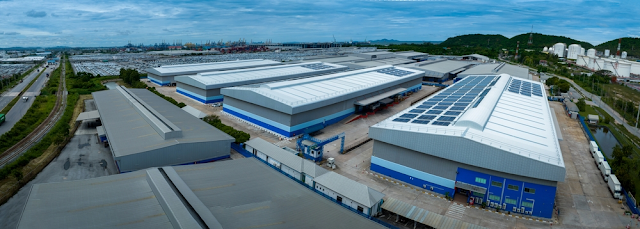Top Five Common Steel Building Mistakes to Avoid
Pre-engineered steel buildings have become increasingly popular in recent years due to their
durability, versatility, and cost-effectiveness. However, like any construction
project, there are certain mistakes that can be made that can lead to delays,
cost overruns, and even safety hazards. In this blog post, we will discuss the
top five mistakes to avoid when building a steel building for a successful
construction project.
1. Not Having a Clear Plan
One of the most common mistakes that people
make when building a steel building is not having a clear plan. It's essential
to have a detailed plan in place before beginning construction. This plan
should include everything from the type of steel building you want to build to
the dimensions, materials, and layout. It's important to consider your
long-term goals and how your steel building solutions will fit
into your overall plans.
A clear plan can help ensure that your
project stays on track and on budget. It also allows you to anticipate
potential issues that may arise during construction and plan accordingly.
2. Choosing the Wrong Steel
Building Construction Company
Choosing the best steel building construction
company in India is crucial for the success of any construction
project. When it comes to building a steel building, it's important to choose a
manufacturer who has experience in working with steel.
The contractor should be licensed, insured, and have a good reputation.
It's also important to ask for references
and to check the manufacturer’s portfolio to see if they have
experience in building the type of steel building you want. Don't just go for
the cheapest option; it's better to pay a little more for an experienced prefabricated
steel building manufacturer than to try to save
money and end up with a poorly constructed building.
3. Skimping on Materials
Another mistake that people often make when
building a steel building is skimping on steel building components. While it
may be tempting to save money by using lower-quality materials, this can
actually end up costing you more in the long run. Cheaper materials are often
not as durable, which means that they will need to be replaced more frequently.
This can lead to higher maintenance costs and may even compromise the safety of
the building.
Investing in high-quality steel building components may cost more upfront, but it will save you money
in the long run. High-quality materials will last longer and require less
maintenance, which means that you will spend less money on repairs and
replacements.
4. Neglecting Permits and
Regulations
When building pre-engineered steel buildings,
it's important to comply with all local building codes and regulations.
Neglecting permits and regulations can lead to fines, delays, and even the
demolition of the building.
Before beginning construction, make sure to
obtain all necessary permits and approvals. Your contractor should be able to
help you with this process. It's also important to comply with all safety
regulations, such as fire safety and accessibility requirements.
5. Not Considering the
Environment
Finally, it's important to consider the
environment when building a steel building. Steel buildings can be designed to
be energy-efficient, which can save you money on heating and cooling costs. You
should also consider using sustainable materials and practices, such as using
recycled steel or incorporating green roofs.
Not considering the environment can lead to
higher energy costs and may even harm the environment. By incorporating
sustainable practices into your construction project, you can save money and
help protect the environment.
Conclusion
Building pre-engineered steel buildings
can be a cost-effective and durable option for many construction projects.
However, there are certain mistakes that can be made that can lead to delays,
cost overruns, and safety hazards. By avoiding these top five mistakes, you can
ensure that your steel building construction project is successful and meets
your long-term goals. Remember to have a clear plan, choose the right
contractor, invest in high-quality materials, comply with permits and
regulations, and consider the environment.



Comments
Post a Comment